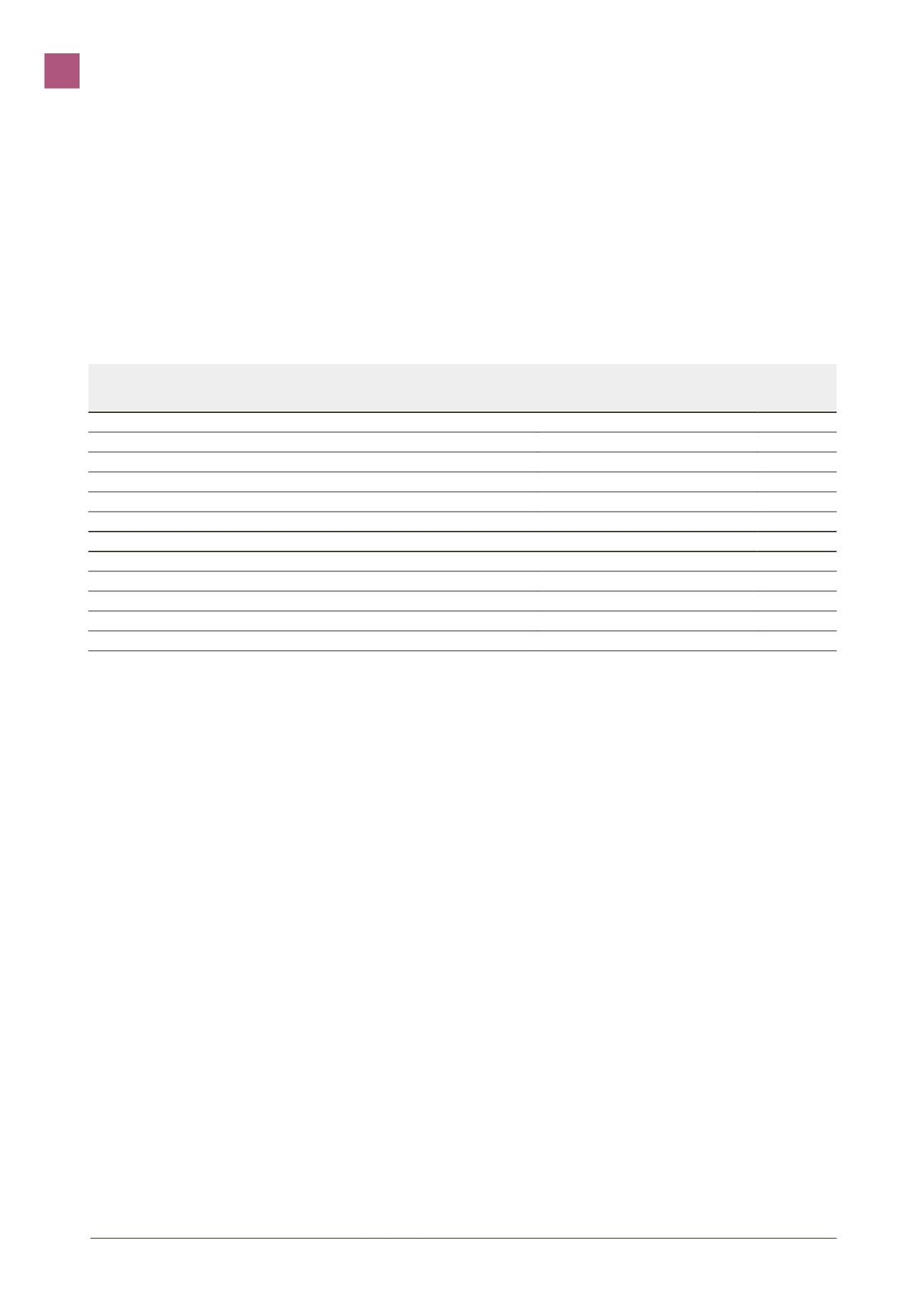

44
LISI 2016 FINANCIAL REPORT
■■
Ankit Fasteners Pvt, Ltd, previously consolidated by the equity
accounting method, was consolidated by the full consolidation
method as of January 1, 2016, after the LISI Group took a majority
interest.
■■
On August 1, 2016 the LISI Group sold to the DAHER Group all
the tangible and intangible assets in the “Floor covering – Interior
Design” activity belonging to its subsidiary INDRAERO SIREN. The
assets concerned are not significant to the Group’s indicators.
2.3.4
I
Acquisitions of subsidiaries
In application of standard IFRS 3 on business combinations, the
LISI Group has 12 months from the acquisition date to make a
final allocation of the acquisition price and a final calculation of the
goodwill. Consequently, the amounts recognized at December 31,
2016 in the acquisition of LISI MEDICAL Remmele may be reviewed
at subsequent closures.
Details of the impact of this acquisition on the Group consolidated balance sheet are given below:
(in €’000)
Recognized fair value
on the acquisition date
Notes
Fixed assets
42,266
2.7.2
Other net short-term assets and liabilities
2,786
Net inventories
8,998
2.7.2.1
Net debt
(3,850)
Taxes and provisions
(380)
Cash and cash equivalents
0
TOTAL NET SITUATION OF THE INCOMING COMPANY
49,820
% of the assets recovered
100
Share of the minorities
Share of the net situation acquired by Hi Shear Corp
49,820
Acquisition price
93,410
Goodwill
43,590
2.4
I
FINANCIAL RISK MANAGEMENT
The Group is exposed to the main following risks arising from the use
of financial instruments:
–
–
credit risk;
–
–
liquidity risk;
–
–
market risk,
–
–
interest rate risk;
–
–
currency risk;
–
–
raw materials risk.
This note presents the information on the Group’s exposure to each
of the risks above, its objectives, policy and procedures for measuring
and managing risk, and for capital management. Quantitative
information is given in other sections of the consolidated financial
statements.
The aim of the Group’s risk management policy is to identify and
analyze the risks to which it is exposed, define the upper and lower
risk limits and the controls required to manage risk and ensure
compliance with the limits defined.
2.4.1
I
Credit risk
Credit risk is the Group’s risk of financial loss in the event that a
customer or other party in a financial instrument fails to meet their
contractual obligations. This risk derives mainly from trade receivables
and securities held for sale.
Trade and other receivables
Group exposure to credit risk ismainly influenced by individual customer
profiles. The Group has a policy of monitoring trade receivables, allowing
it to constantly control its third party risk exposure. The Group believes
that the credit risk of write-off of past due receivables is minimal.
At December 31, 2016 the amount of provisions for doubtful debts
amounted to €3.7 million, to be compared to total receivables of
€226.3 million. The amount of the permanent losses recognized over
the year was €0.3 million.
Risk on investment securities
On December 31, 2016, the Group’s balance sheet showed cash
and cash equivalents of €141.7 million (see §2.6.2.3 Cash and cash
equivalents). The cash equivalents are mainly made of marketable
securities represented by monetary mutual funds, invested in very short
maturity securities and representing no risk in capital, in accordance
with the Group’s cash management policy. In accordance with
accounting principles, these investments are valued at their market
price at year-end.
2.4.2
I
Liquidity risk
The Group’s cash management is centralized: the vast majority of
the cash surpluses or financing requirements of its subsidiaries,
where local legislation permits, is invested or financed by the parent
company on normal market terms. The central cash management
team manages the financing of the Group, current and forecast, and
ensures its capacity to meet its financial commitments. For that
CONSOLIDATED FINANCIAL STATEMENTS
3


















